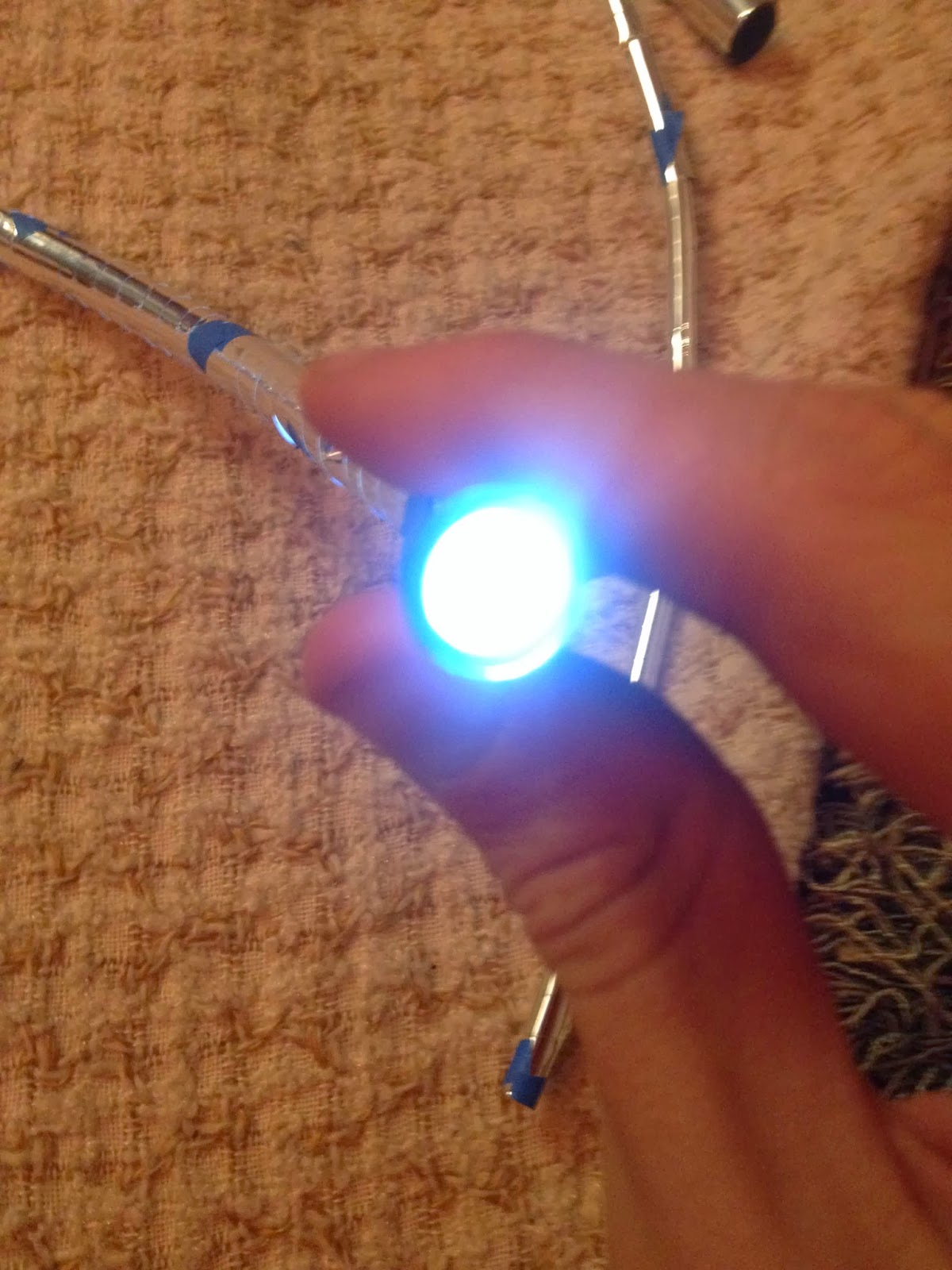In refining my prototype this week, I focused on three things:
- making the periscopes more enclosing (nose hole, blocking peripheral vision, etc.) so that the user would only see the intended view.
- three versions (.5 foot, 1 foot, and 2 feet), so that users can grow/ shrink different amounts.
- handles so users can hold each periscope with one hand.
In my user testing during the week, when handed the periscopes without instructions, many people would look through the PVC pipe handles or the big mirror in the front of the periscope instead of using the eye slit as was intended. In order to account for this, I created more obvious signage of where to look and how to hold. I made yellow signs say "shrink" and the green signs say "grow" (matching the handles you're supposed to hold for shrinking and growing, respectively). Both signs have arrows that point to the eye slit. I also covered the opening of the PVC pipes. The 2 ft periscope was difficult to hold with a PVC pipe, so I made handles instead.
At the Exploratorium on Friday, this was my original set up. The periscopes were laid flat on the table. The whiteboard says "Try each of the periscopes to grow and shrink. Do you see the world differently?" and "While holding a periscope, give a partner a high-5. Is it harder than you thought?"
However, I found that most people just looked at it, maybe touched it, but didn't know what to do. Because the periscopes were laid flat on the table, a lot of people (yes, adults included) bent down to look through the slit and then quickly left when all they saw was the white table. One group of people STILL tried to look through the PVC pipes even though they were covered.
When I moved outside, I replaced the "grow" and "shrink" signs with "Look here" to make the action more obvious. To better invite people to pick up the periscopes, I propped them up on the table. I also made the sign more straightforward.
These slight alterations worked pretty well. These two boys were engaged with the exhibit, largely on their own:
The handles were a problem, however, especially for the 2 feet periscope. Even this Explainer got his arm crossed a bit... Furthermore, a lot of people (including this Explaner) told me that the large periscope "worked best," and that the smaller ones "didn't work for me." The idea of different heights did not resonate with many people.
Here are some typical use cases:
I then discovered this hoops exhibit, and approached some kids to try using the periscopes instead of the provided glasses. This allowed kids, especially, to be more engaged with the periscopes, instead of just looking for 20 seconds and walking away.
This group of boys REALLY got into it.
These two guys got really into it, and must have stayed playing with the hoops & periscopes for 5 minutes. After mastering the exhibit, they moved back a few feet for the expert level.
The handles problem still remained, however. These girls had a tough time figuring out where exactly the hold the periscopes. I imagine they might have given up if I wasn't standing there offering prompts.
The handles problem still remained, however. These girls had a tough time figuring out where exactly the hold the periscopes. I imagine they might have given up if I wasn't standing there offering prompts.
This was the final iteration of my sign. I thought it worked well! It's amazing how much people need to be instructed on what to do. People didn't start walking around with the periscopes until I wrote "Walk around."
Changes for this week:
1. Get rid of the 2 feet periscope. People loved it, but it was heavy/ awkward to hold, and most importantly, had a different affordance for holding than the other two periscopes. I don't think the additional slope on the learning curve is worth it. Most visitors also only tried two periscopes, not all three.
2. Better affordances & signage for holding and viewing with the periscopes. I had to instruct a lot of people to "flip it around" or "turn it upside down" or "look through the slit." A lot of people also didn't realize there were handles, even though they were green and yellow and had hands drawn on them. I'm thinking about ways I can enlarge the eye slit, using more symbols (arrows and pictures of eyes) instead of words. Perhaps a diagram of someone holding the periscope would be helpful in helping visitors discover the handles.
3. Either create a rack or modify the shape of the periscopes so that they will always stand upright (so people will pick them up).
In general, it was really cool being on the floor of the exhibit, and see how people respond to the pieces they've never seen before & have no background information about.
It was cool seeing what parts of exhibits enthrall kids. ...Like the sculpture these girls made on Dan's exhibit (quite impressive...).
Exhausting day, but happy to spend it with you all! :)




























.JPG)


.JPG)

















